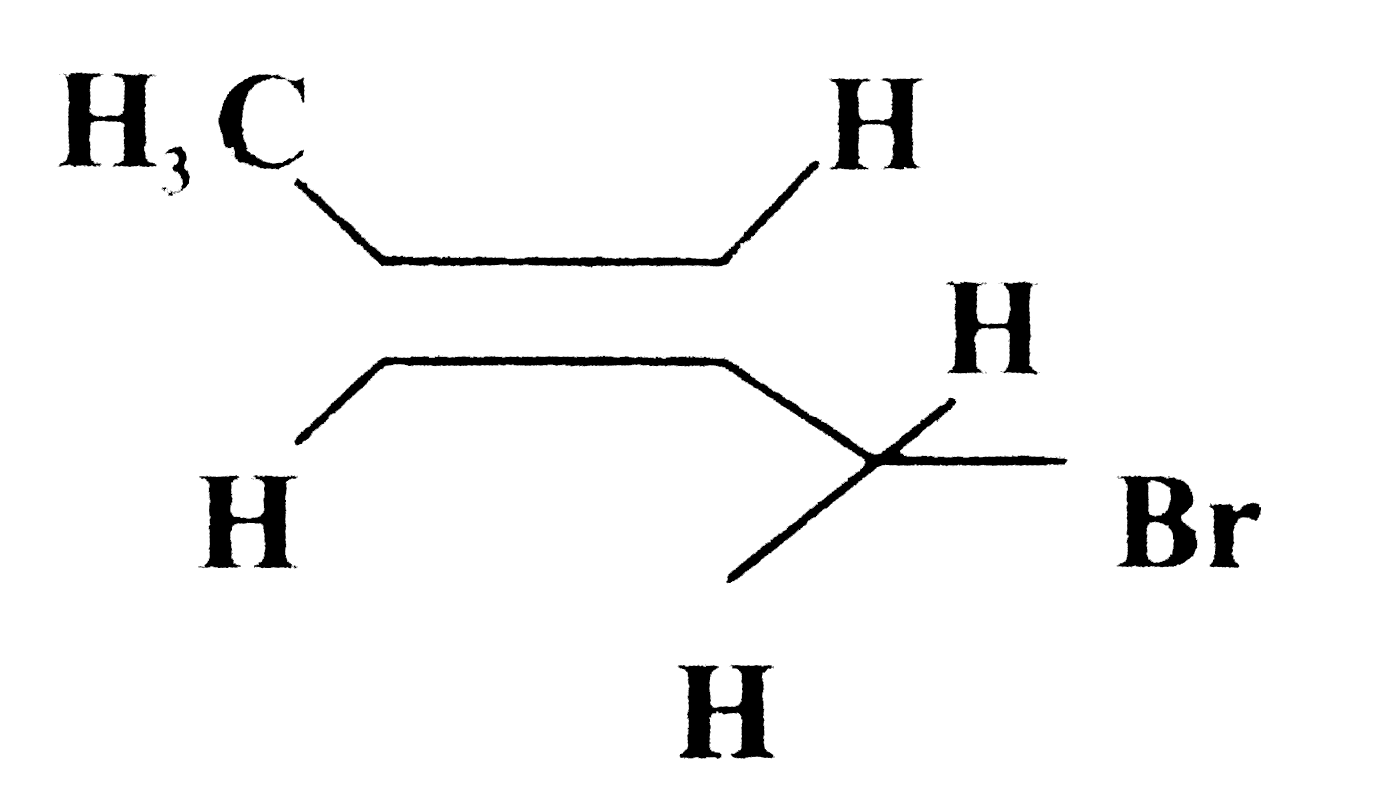Complete the following chemicals equation
CH3CH2CH=CH2+HBr(peroxide)−−−−−−→
To complete the chemical equation for the reaction of 1-butene (CH₃CH₂CH=CH₂) with HBr in the presence of peroxide, we will follow these steps:
1. Identify the Reactants: The reactants are 1-butene (CH₃CH₂CH=CH₂) and HBr, with the presence of peroxide.
2. Understand the Reaction Type: This is an addition reaction where HBr adds across the double bond of the alkene.
3. Apply the Anti-Markovnikov Rule: In the presence of peroxide, the reaction follows the anti-Markovnikov addition rule. This means that the bromine (Br) will attach to the carbon with the greater number of hydrogen atoms, while the hydrogen (H) will attach to the carbon with fewer hydrogen atoms.
4. Analyze the Structure of 1-Butene: The structure of 1-butene can be represented as:
CH3−CH2−CH=CH2
Here, the double bond is between the third and fourth carbon atoms.
5. Determine the Product Formation:
- The carbon atoms involved in the double bond are:
- C1: CH₃ (1 hydrogen)
- C2: CH₂ (2 hydrogens)
- C3: CH (1 hydrogen)
- C4: CH₂ (2 hydrogens)
- According to the anti-Markovnikov rule, Br will attach to C2 (which has 2 hydrogens), and H will attach to C3 (which has 1 hydrogen).
6. Write the Product: The product of the reaction will be:
CH3−CH2−CH(Br)−CH3
This can also be written as:
CH3−CH2−CH2−CH2Br
7. Name the Product: The product is 1-bromobutane or butyl bromide.
Final Equation:
The complete chemical equation is:
CH₃CH₂CH=CH₂+HBr(∈thepresenceofper⊗ide)→CH₃CH₂CH(Br)CH₃
or
1−bute≠+HBr→1−bromobutane(orbutylbromide)
CH3−CH2−CH=CH2
Here, the double bond is between the third and fourth carbon atoms.
- The carbon atoms involved in the double bond are:
- C1: CH₃ (1 hydrogen)
- C2: CH₂ (2 hydrogens)
- C3: CH (1 hydrogen)
- C4: CH₂ (2 hydrogens)
- According to the anti-Markovnikov rule, Br will attach to C2 (which has 2 hydrogens), and H will attach to C3 (which has 1 hydrogen).
CH3−CH2−CH(Br)−CH3
This can also be written as:
CH3−CH2−CH2−CH2Br
The complete chemical equation is:
CH₃CH₂CH=CH₂+HBr(∈thepresenceofper⊗ide)→CH₃CH₂CH(Br)CH₃
or
1−bute≠+HBr→1−bromobutane(orbutylbromide)
Topper's Solved these Questions
- HALOALKANES AND HALOARENESBOOK - DINESH PUBLICATIONCHAPTER - HALOALKANES AND HALOARENESEXERCISE - Higher Order Thinking Skills Questions
9 Videos
- HALOALKANES AND HALOARENESBOOK - DINESH PUBLICATIONCHAPTER - HALOALKANES AND HALOARENESEXERCISE - Some typical work problems based on coversions
6 Videos
- HALOALKANES AND HALOARENESBOOK - DINESH PUBLICATIONCHAPTER - HALOALKANES AND HALOARENESEXERCISE - Additional important questions
30 Videos
- GENERAL PRINCIPLES AND PROCESSES OF ISOLATION OF ELEMENTS BOOK - DINESH PUBLICATIONCHAPTER - GENERAL PRINCIPLES AND PROCESSES OF ISOLATION OF ELEMENTS EXERCISE - Brain Storming Multiple Chocie Questions
7 Videos
- HYDROCARBONSBOOK - DINESH PUBLICATIONCHAPTER - HYDROCARBONSEXERCISE - All Questions
493 Videos
Similar Questions
Knowledge Check
The reaction CH3CH=CH2+HBrperoxide−−−−→ mainly gives
A2-bromopropaneB2,2-dibromopropaneC1-bromopropaneD1, 2-dibromopropane
CH3CH=CH2+BrCCl3Peroxide−−−−→[A]
View SolutionComplete the following reactions:
(a) CH3−CH=CH2+CCl4Peroxide−−−−→?
(b) H2C=CH−(CH2)5−CH3+CHCl3Peroxide−−−−→?
View SolutionComplete the following Reaction
CH3−CH=CH2+HBr
CCl3−CH=CH2+HBr
View SolutionPredict the major product in the following reactions
(i). CH3−CH=CH2+HBr(Peroxide)−−−−−−→
(ii). C2H5Br+AgCN→
(iii). CH3CH2Br+Na→
(iv). CH3−C∣BrH−CH3+aqKOH→
View SolutionComplete the following reactions :
CH3CH=CH2+O3Zn/H2O−−−−−→
View SolutionComplete the following reactions :
CH3CH=CH2+H2Pd,Pt orNi−−−−−−→?
View SolutionComplete the following reaction:
CH3−CH=CH2HBr−−−−→PeroxideXNaI−−−−→AcetoneY.
View Solution

